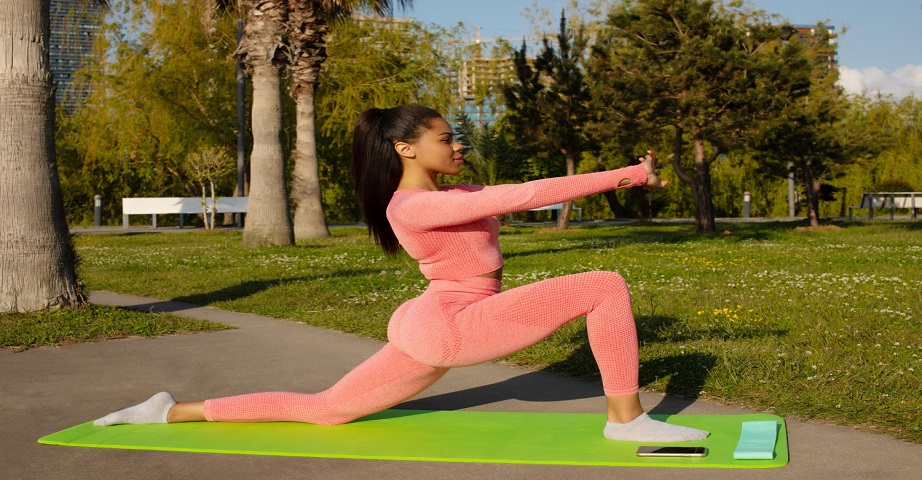Types of training and their benefits

Tabata, crossfit, HIIT, cardio dance... . Are you also wondering how many types of workouts there actually are? You may be surprised, but each workout can be categorised into one of three types. Yes, only three, which are the basic division of physical activities. In this article, we explain the types of workouts, what effects you can expect from them and what exercises you should do to achieve these effects.
How many types of workout exist?
The list of exercises and physical activities seems to be endless. Workouts developed by people from the fitness world often have catchy names that give the impression that we are dealing with yet another new type. When creating a classification of workouts, many factors can be taken into account, such as the speed of the movement, the way the muscles are stretched, the level of heart rate, the muscle group being worked, the number of muscle groups involved or the use of oxygen during the exercise. On this basis, the classification of training can be expanded and made more and more specific. We can speak of isometric and isokinetic training, general development, interval training, high intensity, ABS, functional training and many, many others.
So, how many types of training are there? If we took into account all the factors that characterise an activity, it would be impossible to answer this question. However, by going back to the roots and dividing activities according to the most basic criteria, there are only three types of training - endurance (fitness) training, resistance (strength) training and stretching. Nevertheless, there are many exercises and training plans that combine different types of training or fit into more than one category at the same time.
Types of training - endurance training
Endurance training, otherwise known as cardio or conditioning, is a type of training in which the heart rate and breathing rate accelerate and much more oxygen is delivered to the muscles. During endurance training, the muscles' demand for oxygen increases, forcing the heart to pump blood faster and the lungs to take in more air. As you progress in this type of training, the cardiovascular and respiratory systems become stronger. Faster breathing and heart rate stop being such pressure on the body, so stamina improves. Better endurance means less breathlessness during exercise. But not only that.
Benefits of endurance training
Endurance exercise is a type of training that affects many aspects of health:
- improves cardiovascular function,
- reduces the risk of cardiovascular disease,
- reduces the risk of death from cardiovascular incidents,
- lowers blood pressure,
- improves lipidogram,
- improves glycaemic control,
- strengthens the immune system,
- improves the quality of sleep,
- has a positive impact on mental health,
- helps maintain a healthy body weight.
Recommended products
Examples of endurance exercises
When considering what types of exercise count as endurance, fitness-building exercises, we can first of all observe our breathing and heart rate during exercise. If an exercise makes your breathing quicker (often also shallow at first) and your heart beat noticeably faster, it is an endurance exercise. This type of training includes brisk walking running, dancing, swimming, cycling, climbing, team games, tennis, aerobics or pilates.
Types of exercise - strength training
Strength training exercises are another type of exercise. These are more static than endurance exercises, do not raise the heart rate as much, and cause fatigue primarily felt as pain in the muscles being trained, rather than breathlessness and problems with calming the heart rate. Strength exercises are performed with loads of various types - with free weights or machines, with resistance bands, but also with your own body weight.
Strength training is a type of exercise that is primarily associated with building muscle mass. Indeed, without resistance training, there is no way to have strong, big muscles. But these exercises are not only useful when working on an athletic physique. Strength training is a type of activity that is useful in everyday life, as it increases stability, makes it easier to climb stairs, get up from the floor or a chair, carry shopping, move heavy things around the house, carry a bicycle or a pram. These examples can be multiplied endlessly, showing that strength simply comes in handy.
Benefits of strength training
You might wonder what more, apart from strength, strength training offers. It provides:
- increases bone mass and stimulates bone regeneration,
- lowers blood glucose levels,
- strengthens the heart and blood vessels,
- lowers blood pressure,
- reduces total cholesterol and LDL cholesterol,
- participates in the maintenance of normal body weight,
- reduces visceral fat,
- reduces tension and pain in the lower back,
- reduces joint pain,
- supports balance and good posture,
- reduces the risk of falls and injuries,
- reduces inflammation in the body,
- improves mood,
- has a positive impact on memory and cognitive abilities.
Examples of strength exercises
Strength exercises are easy to recognise. They are all activities that require muscular strength and endurance. In everyday life, for example, muscular endurance is required to carry a shopping bag and strength is required, for example, to put a suitcase on a shelf over your head on an aeroplane. In this type of training, we can perform, for example, all exercises with barbells and dumbbells, push-ups, pull-ups on a bar, planks, squats or rowing. Each of the mentioned exercises has at least a few modifications, thanks to which it is possible to train different parts of the muscles at different intensities.

Types of training - stretching
The last of the basic types of training is stretching. Stretching exercises are not focused on building either endurance or strength, but on working on the flexibility and extensibility of muscles, tendons and joints. Muscles tend to contract and contracted muscles do not function properly. Without stretching, there is an increased risk of muscle spasms, chronic pain, muscle damage, strain, joint pain and falls. Shrunken muscles also make it more difficult to perform everyday activities, such as bending down to tie your shoes or stretching your arms up to reach for something lying up high.
Stretching should not be forgotten when doing other types of training. But it's also important to remember that it's a stand-alone workout that's worth doing at least three times a week to make yourself more comfortable on a daily basis. After all, who doesn't dream of a neck that doesn't hurt when working in front of a computer for hours.
